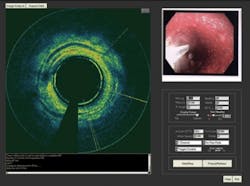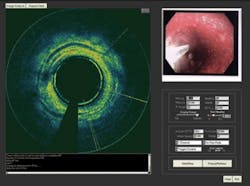Laser safety and common sense caution
DESIGN SPECIFIC SAFETY MECHANISMS INTO THE MACHINE
STEPHAN BUNDSCHU AND PETER KELLER
Note to readers: The information presented in this article is not intended as a definitive or exhaustive guide to laser safety, but rather an overview of the topic.
Laser technology has become integral to our society, and it is not overstating its contributions to say that lasers have literally revolutionized the manufacturing process.
However, it's precisely because this technology is so powerful that certain safety protocols must be practiced. Our intent is that this article will remind manufacturers and operators that safety in the context of laser technology should be much more than a mere afterthought; after all, a little common sense caution can go a long way toward avoiding eye and skin injuries – and to sustaining the forward momentum of the production process.
The subject of laser safety is becoming even more complex with the introduction of different types of laser technology to the marketplace, especially the 2D laser cutting systems with solid-state lasers.
Safety as part of the design process
There is currently much discussion in the industry concerning the pros and cons of purchasing cutting systems with 10 micron and 1 micron wavelengths. Conversation typically revolves around the lasers' respective capabilities for specific applications. Unfortunately, the safety concerns that should be a part of these conversations – often aren't.
2D laser cutting systems with solid-state lasers and CO2 lasers fall into Class 1 or 4 of the laser hazard categorization defined by the American National Standards Institute (ANSI). However, the specific wavelength of the laser light makes solid-state lasers require lower exposure levels to avoid hazards. Manufacturers are wise to be safety-conscious upfront by addressing the topic during the design and building of solid-state 2D laser cutting machines.
One important step that manufacturers can take is to conceal the cutting laser inside a system in order to keep harmful effects from its beam out of view. Again, this is especially true where solid-state laser cutting systems are concerned. Unlike their CO2 counterparts that feature open roofs and large viewing windows, solid-state systems must be entirely enclosed to keep even minimal amounts of laser light from escaping. Viewing windows also tend to be smaller and are made of a wavelength-specific safety glass.
Another way to incorporate safety into the design process, right from the beginning, is to design and manufacture 2D solid state laser machines so that they qualify as Laser Hazard Class 1 machines, which are safe under all normal operating conditions and do not require expensive safety glasses or the presence of a Laser Safety Officer on site.
The business side of safety
Something for readers to consider when purchasing their next laser-cutting system, whether it's powered by a solid-state or a CO2 laser, is that attention to safety makes not only common sense, but also good business sense. Safety requirements can have a financial impact on a company in the form of fines and penalties if regulations are breached and your company is cited for an infraction.
Certain types of lasers will require an addition to your payroll if it's necessary to hire or to educate an employee to become a Laser Safety Officer. A recent, quick perusal of employment ads for Laser Safety Officers uncovered three such positions in various geographic locations in the U.S.
Classes of laser hazards
The following information on the classes of laser hazards are presented as an overview to help purchasers and users of laser equipment
There are four classes of laser hazards, which have been defined by ANSI, and the safety issues and requirements are different for each, depending on whether you are working with a CO2 laser, which has output light at a 10 micron wavelength (while it is the least hazardous laser, it can in certain situations of overexposure cause eye injury), or a solid-state laser with output light at 1 micron wavelength (the most hazardous output). The wavelength from a laser depends on the lasing medium being excited.
Class 1 and Class 1M lasers are deemed safe for all conditions of normal use. This class of laser cannot produce a hazardous beam because it is of extremely low power, or because it has been rendered inherently safe due to the laser having been completely enclosed so that no hazardous radiation can escape and cause injury. Class 1M can be hazardous when using viewing optics such as a loupe.
Class 2 lasers and 2M lasers are visible light (400 to 760 nm) continuous wave or pulsed lasers that can emit energy greater than the limit for Class 1 lasers and radiation power not above 1 mW. Class 2M lasers are potentially hazardous when viewed with optical aids. Class 2 lasers are hazardous only if you stare directly into the beam for a long time, which would be similar to staring directly at the sun. Because Class 2 lasers include only visible wavelengths, the aversion reaction – the tendency to look away from a bright light – will usually prevent permanent eye damage.
Class 3R lasers are potentially hazardous under some direct and specular reflection viewing conditions if the eye is appropriately focused and stable, but they are normally not hazardous for diffuse reflection conditions. This class will not cause thermal skin burn or fires.
Class 3B lasers, in addition to including the potential hazards outlined above for Class 3 and 3R lasers, requires a Laser Safety Officer, and a written Standard Operating Procedure is recommended.
Class 4 lasers are high-powered lasers, the most hazardous and dangerous of all classes. Both CO2 and solid-state lasers are in this class. However, what makes solid-state lasers of greater concern of the two is the wavelength level of the laser light. Even a diffuse reflection can cause injury. Visible and near-IR lasers will cause severe retinal injury and burn the skin. UV and far-IR lasers of this class can cause injury to the surface of the eye and the skin from the direct beam and specular reflections. This class of laser can also cause fires, and Class 4 lasers require the services of a Laser Safety Officer and written Standard Operating Procedures.
A multi-faceted matter
There is no questioning the complexity of the issue of laser safety. Certainly, there are many things to consider when purchasing 2D laser-cutting systems or other types of laser equipment. In addition to designing "safe" machines and ensuring that employees and machine operators practice protocols to stay safe, there are other measures that can be taken to prevent injury from lasers. These include engineering controls, administrative controls, personnel protective equipment, and warning signs and labels.
However, to reiterate, one of the most important things to consider is the design of the machine. Before generating a purchase order, find out, up front, what the manufacturer has done to ensure the safety of the machine operators. Where did the laser installed in the machine come from? Who designed and built the resonator? Is this company's track record for safety worthy?
Be sure that specific safety mechanisms are designed into the machine to insure peace of mind upfront.
STEPHAN BUNDSCHUis chief engineer andPETER KELLERis senior project engineer in charge of safety at TRUMPF Inc., Farmington, CT; email [email protected].
More ILS Current Issue Articles
More ILS Archives Issue Articles


